Practical On-Page SEO Tips for 2025 Success

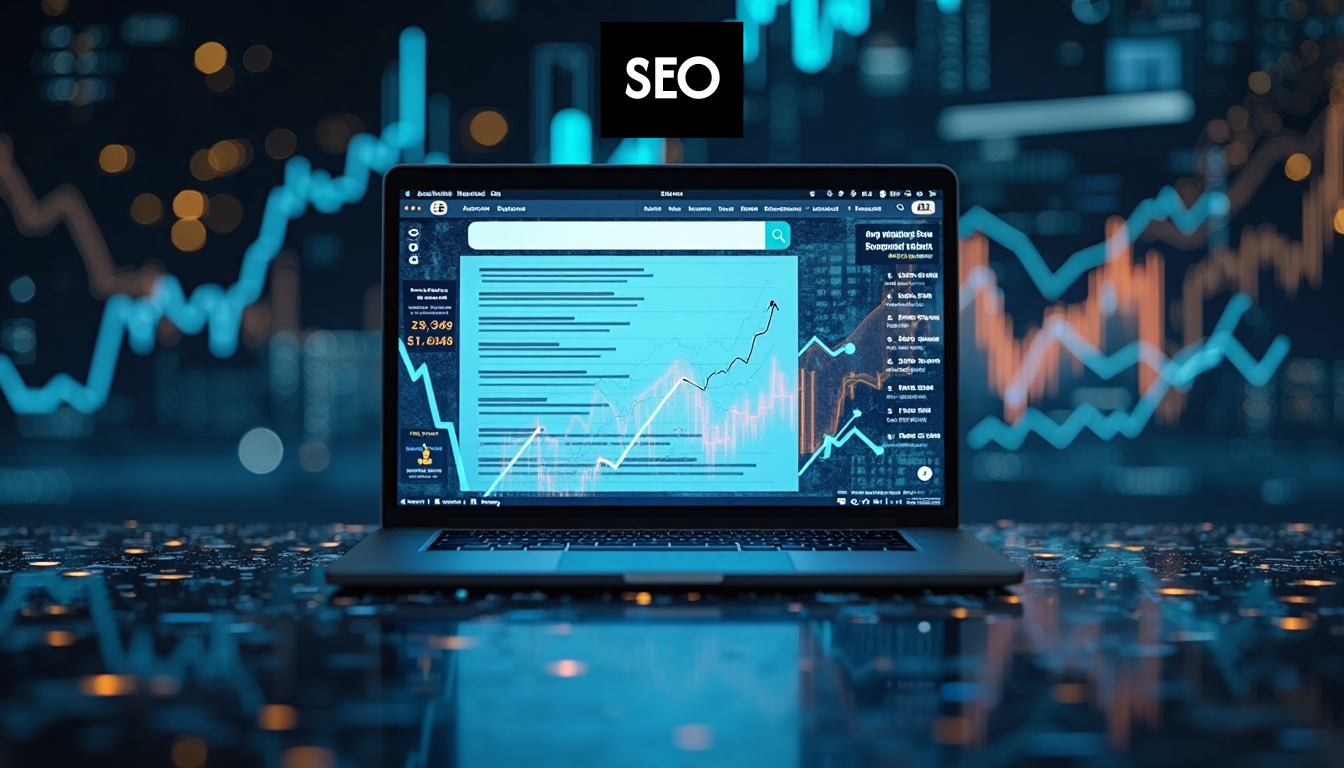 On-page SEO is not just technical jargon for digital marketers; it's a game changer for anyone looking to boost their online visibility. Studies show that comprehensive, original content can improve search visibility by over 50 percent. But here’s the kicker: many still believe that simply stuffing keywords is enough to rank. In reality, the secret lies in optimizing for user intent and experience, transforming your pages into valuable resources that resonate with visitors and search engines alike.
On-page SEO is not just technical jargon for digital marketers; it's a game changer for anyone looking to boost their online visibility. Studies show that comprehensive, original content can improve search visibility by over 50 percent. But here’s the kicker: many still believe that simply stuffing keywords is enough to rank. In reality, the secret lies in optimizing for user intent and experience, transforming your pages into valuable resources that resonate with visitors and search engines alike.
Table of Contents
- What Is On-Page Seo?
- Key Elements Of On-Page Optimization
- Advanced On-Page Seo Strategies
- Measuring Your On-Page Seo Results
- Key Performance Indicators (Kpis) For On-Page Seo
- Advanced Analytics And Performance Tracking
- [Interpreting And Acting On Seo Data](#interpreting-and-a cting-on-seo-data)
Quick Summary
| Takeaway | Explanation |
|---|---|
| Content Quality is Crucial | Creating comprehensive, original content that addresses user search intent directly impacts on-page SEO performance and search visibility. |
| Technical Elements Matter | Optimizing title tags, meta descriptions, header hierarchy, and ensuring fast load speeds and mobile responsiveness are essential for effective on-page SEO. |
| Understand User Intent | Semantic search optimization requires content that answers user questions comprehensively, including topic clustering and intent mapping techniques. |
| Focus on User Experience | Structuring content for clear navigation, engagement, and usability improves overall search rankings as search engines prioritize user satisfaction. |
| Measure and Adapt | Regularly track KPIs like organic traffic, click-through rates, and conversion rates to refine SEO strategies and ensure continuous improvement. |
What is On-Page SEO?
On-page SEO represents the strategic optimization of individual web pages to improve search engine rankings and attract more relevant organic traffic. Unlike broad marketing strategies, on-page SEO focuses on fine-tuning specific elements within your webpage to communicate more effectively with search engines and provide exceptional value to users.
The Core Components of On-Page SEO
At its fundamental level, on-page SEO involves optimizing multiple interconnected webpage elements to enhance search visibility. Google's Search Quality Evaluator Guidelines emphasize that successful on-page optimization requires a holistic approach that balances technical precision with high-quality content.
The primary components include:
- Content Quality: Creating comprehensive, original content that directly addresses user search intent
- HTML Elements: Strategically optimizing title tags, meta descriptions, and header structures
- Page Structure: Ensuring clean, logical webpage architecture that facilitates easy navigation and comprehension
Technical and Content Optimization Strategies
Effective on-page SEO goes beyond simple keyword insertion. Backlinko's comprehensive SEO research reveals that modern search algorithms prioritize nuanced content that demonstrates expertise, authoritativeness, and comprehensiveness.
Key optimization strategies include:
- Crafting descriptive, keyword-rich title tags that accurately represent page content
- Writing meta descriptions that compel users to click through from search results
On-page SEO serves as the foundation of your website's search performance. By meticulously optimizing individual page elements, you create a strong signal to search engines about your content's relevance, quality, and user value. The goal isn't just to rank higher, but to provide an exceptional user experience that naturally attracts and retains visitors.
While technical optimization is crucial, remember that user experience remains paramount. Search engines like Google continuously refine algorithms to prioritize pages that offer genuine value, meaningful information, and intuitive navigation. Your on-page SEO strategy should always center on creating content that genuinely helps and engages your target audience.
Key Elements of On-Page Optimization
On-page optimization involves strategic techniques that transform individual web pages into powerful search engine magnets. By understanding and implementing key optimization elements, digital marketers can significantly enhance their website's visibility and user engagement.
Content and Keyword Optimization
Content remains the cornerstone of effective on-page SEO. Backlinko's comprehensive research reveals that strategically placing target keywords within the first 100-150 words can dramatically improve search engine understanding and page relevance. This approach signals to search algorithms the primary topic and intent of your content.
Key content optimization strategies include:
- Keyword Placement: Naturally integrate target keywords in title tags, headings, and initial content paragraphs
- Semantic Variation: Use related terms and synonyms to provide context and avoid keyword stuffing
- Content Depth: Create comprehensive, authoritative content that thoroughly addresses user search intent
Technical On-Page Elements
Beyond content, technical on-page elements play a crucial role in SEO performance. Google's Search Quality Evaluator Guidelines emphasize the importance of structured, user-friendly page design.
Critical technical optimization components include:
- Crafting unique, descriptive title tags that accurately represent page content
- Writing compelling meta descriptions that encourage click-throughs
- Implementing a clear header hierarchy (H1, H2, H3) to structure content
- Optimizing URL structures with concise, keyword-relevant slugs
- Ensuring fast page load speeds and mobile responsiveness
Structural and User Experience Optimization
Search engines increasingly prioritize user experience as a ranking factor. SEO experts at Moz highlight that pages providing clear navigation, engaging content, and intuitive design are more likely to rank higher in search results.
Structural optimization strategies focus on:
- Creating logical internal linking structures
- Designing clear, scannable content with appropriate white space
- Implementing schema markup to provide additional context to search engines
- Optimizing images with descriptive alt text and compressed file sizes
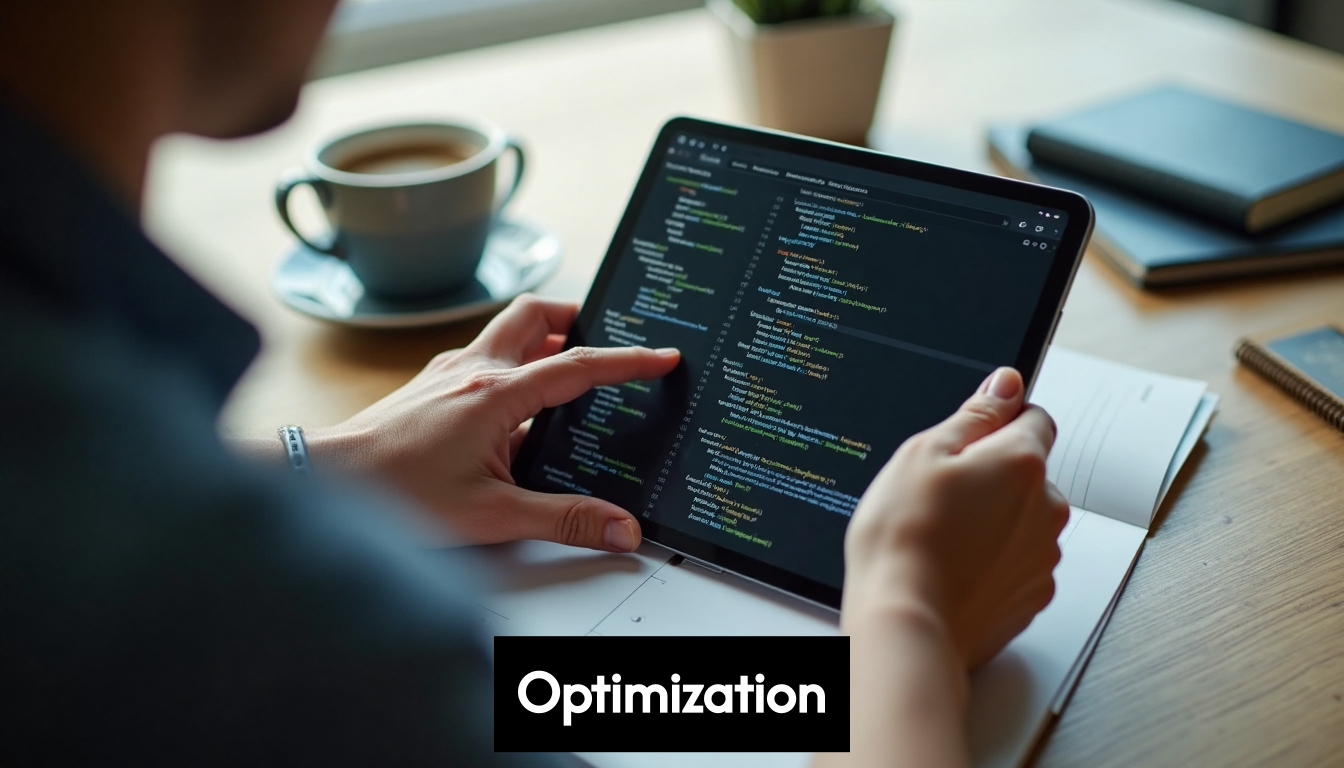 Successful on-page optimization is not about gaming search algorithms but creating genuine value for users. By carefully balancing technical precision with high-quality, user-focused content, websites can achieve sustainable search performance. Remember that search engines continuously evolve, prioritizing pages that demonstrate expertise, authoritativeness, and a commitment to solving user queries effectively.
Successful on-page optimization is not about gaming search algorithms but creating genuine value for users. By carefully balancing technical precision with high-quality, user-focused content, websites can achieve sustainable search performance. Remember that search engines continuously evolve, prioritizing pages that demonstrate expertise, authoritativeness, and a commitment to solving user queries effectively.
Advanced On-Page SEO Strategies
Advanced on-page SEO strategies represent the next frontier of digital optimization, moving beyond basic techniques to create more intelligent, user-focused content experiences. As search algorithms become increasingly sophisticated, marketers must adopt more nuanced approaches that balance technical precision with genuine user value.
Semantic Search and Intent Optimization
Research from Search Engine Journal reveals that modern SEO demands a profound understanding of user intent, not just keyword matching. Semantic search requires content that comprehensively addresses user questions, providing contextual depth that goes beyond surface-level information.Key semantic optimization strategies include:
- Topic Clustering: Developing interconnected content that explores a subject from multiple angles
- Intent Mapping: Aligning content with specific user search intentions (informational, navigational, transactional)
- Comprehensive Coverage: Creating content that anticipates and answers related user queries
AI-Powered Content Optimization
Artificial intelligence is transforming on-page SEO strategies. Google's advanced algorithms now leverage machine learning to understand content context, requiring a more sophisticated approach to optimization.
Cutting-edge AI-driven optimization techniques include:
- Using natural language processing tools to analyze content relevance
- Implementing schema markup that provides rich, structured data
- Developing content that demonstrates topical expertise
- Utilizing AI-powered content analysis to identify optimization opportunities
- Creating dynamic, adaptable content structures
Zero-Click Search and Featured Snippet Optimization
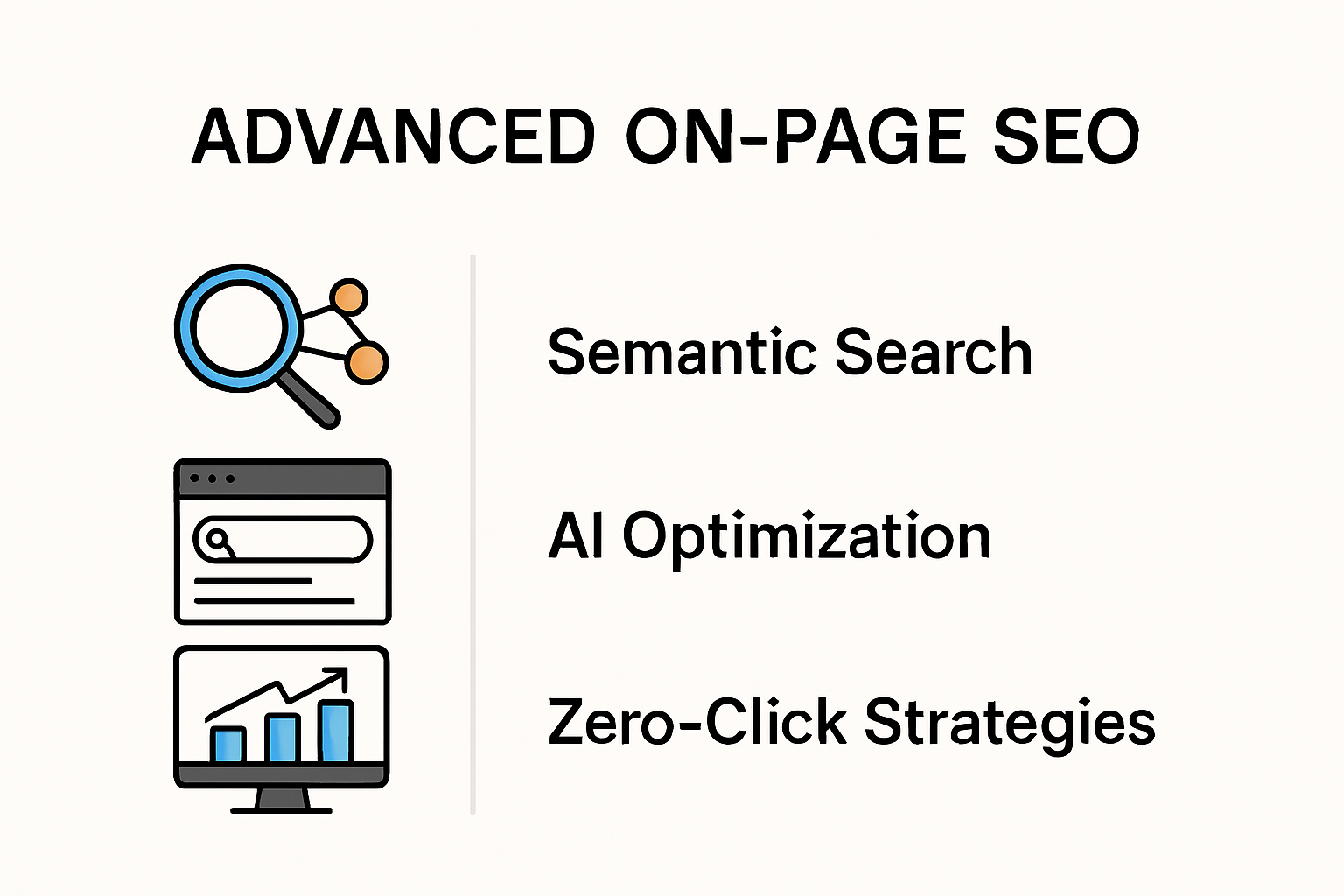 Semrush research indicates that over 50% of Google searches now end without a click to external websites, making featured snippet optimization crucial. Advanced SEO practitioners must design content specifically to capture these valuable SERP real estate opportunities.
Semrush research indicates that over 50% of Google searches now end without a click to external websites, making featured snippet optimization crucial. Advanced SEO practitioners must design content specifically to capture these valuable SERP real estate opportunities.
Strategies for featured snippet and zero-click optimization include:
- Structuring content with clear, concise answers to common questions
- Using bulleted and numbered lists that search engines can easily extract
- Creating dedicated FAQ sections with precise, authoritative responses
- Implementing clear heading structures that facilitate easy information parsing
- Developing content that directly answers user queries within the first 100 words
Successful advanced on-page SEO is no longer about manipulating search algorithms but creating genuine value. By focusing on user experience, comprehensive information, and intelligent content design, websites can achieve sustainable search performance. The future of SEO lies in understanding and anticipating user needs, leveraging technology to provide increasingly personalized and relevant content experiences.
Measuring Your On-Page SEO Results
Measuring on-page SEO results requires a comprehensive, data-driven approach that goes beyond surface-level metrics. Successful digital marketers understand that effective measurement involves tracking multiple performance indicators to gain a holistic view of their optimization strategies.
Key Performance Indicators (KPIs) for On-Page SEO
Search Engine Journal emphasizes that effective SEO measurement demands a nuanced approach to tracking performance. Identifying and monitoring the right KPIs provides critical insights into your optimization efforts.Crucial KPIs to track include:
- Organic Traffic: Measuring total visitor numbers from search engines
- Keyword Rankings: Monitoring position changes for target keywords
- Click-Through Rate (CTR): Analyzing how often search users click on your content
- Conversion Rate: Tracking how effectively organic traffic translates to desired actions
Advanced Analytics and Performance Tracking
Google Search Console provides the most direct window into your website's search performance. Moz's SEO experts recommend a multi-dimensional approach to performance analysis that goes beyond simple ranking tracking.Advanced tracking strategies include:
- Implementing comprehensive conversion tracking
- Analyzing user behavior through heat maps and engagement metrics
- Comparing performance against industry benchmarks
- Tracking total search visibility and impressions
- Monitoring page-level performance and individual content effectiveness
Interpreting and Acting on SEO Data
First Page Sage's research reveals that successful SEO measurement is not just about collecting data, but transforming insights into actionable strategies. The average visitor-to-lead conversion rate of 2.4% serves as a critical benchmark for performance evaluation.Key interpretation strategies include:
- Identifying top-performing content and understanding its success factors
- Recognizing underperforming pages that require optimization
- Correlating content changes with performance improvements
- Developing data-driven content and optimization strategies
- Continuously refining approach based on measurable results
Effective on-page SEO measurement requires patience, precision, and a willingness to adapt. While immediate results are rare, consistent tracking and strategic refinement can yield significant long-term improvements. Remember that SEO is an ongoing process of understanding user needs, creating valuable content, and continuously optimizing based on data-driven insights. The most successful digital marketers view measurement not as a one-time activity, but as a continuous cycle of learning, implementing, and improving.
Frequently Asked Questions
What is on-page SEO?
On-page SEO is the practice of optimizing individual web pages to improve their search engine rankings and attract relevant organic traffic. It focuses on enhancing elements like content quality, HTML tags, and overall user experience.
How can I improve my on-page SEO for 2025?
To improve on-page SEO for 2025, focus on creating comprehensive and original content that addresses user intent, optimizing technical elements like title tags and meta descriptions, and ensuring a positive user experience with fast loading speeds and mobile responsiveness.
What are key elements of on-page optimization?
Key elements of on-page optimization include content and keyword optimization, technical on-page elements (such as title tags and headers), and structural/user experience optimization to enhance webpage navigation and engagement.
How do I measure the success of my on-page SEO efforts?
Measure the success of your on-page SEO efforts by tracking key performance indicators (KPIs) such as organic traffic, keyword rankings, click-through rates, and conversion rates. Using tools like Google Search Console can help analyze performance effectively.
Unlock Your SEO Potential with BabyLoveGrowth.ai
Are you struggling with transforming your on-page SEO strategies into tangible results? The journey from crafting high-quality content to mastering technical optimization can often feel overwhelming. Many businesses find themselves stuck balancing keyword placement, content depth, and user experience while trying to enhance their search visibility.
Let BabyLoveGrowth.ai be your ally in this journey! Our AI-driven platform automates the SEO content generation process, so you can focus on what you do best—running your business. With a tailored three-step process that includes in-depth analysis of your business and competitors and the generation of a customized 30-day content plan that evolves with search engine algorithms, overcoming your on-page struggles is easier than ever.
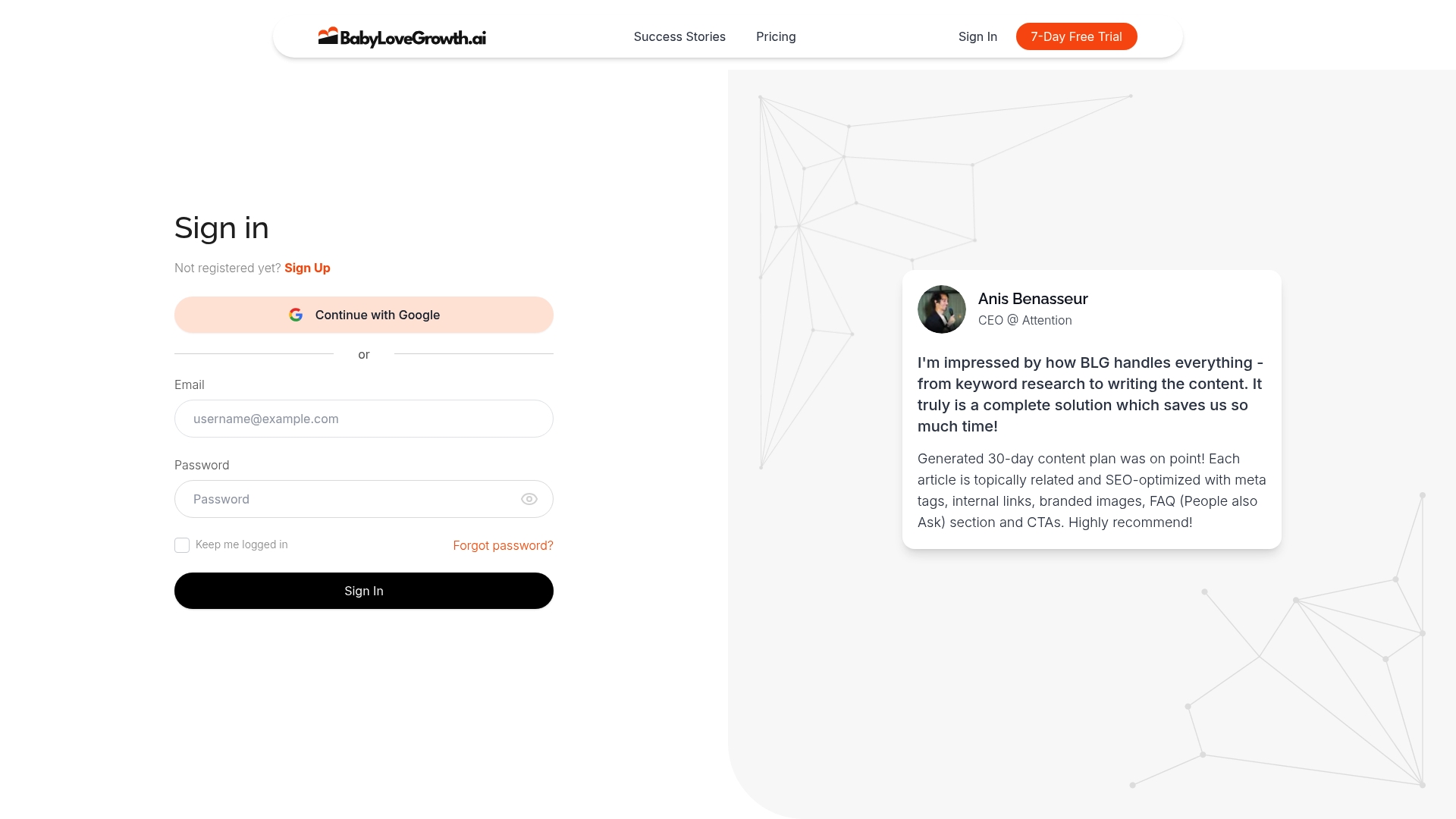
Ready to skyrocket your search engine visibility? Don’t wait—every moment counts in the ever-evolving world of SEO! Visit https://babylovegrowth.ai to start optimizing your digital presence today. Take the first step towards sustainable growth and watch your organic traffic climb as you effortlessly engage your target audience!
Recommended Articles
- What Is a Guest Blogger? Discover How Guest Posting Boosts Your SEO & Brand Authority
- Track LLM Traffic in Google Analytics 4 (GA4)
- SEO for Restaurants: Simple Strategies to Boost Your Business
- seo for law firms: Proven Tactics to Boost Online Growth
- Are Internal Links Good for SEO? Unlock Your Site’s Hidden Ranking Boost
Smart SEO,
Faster Growth!
Most Read Articles
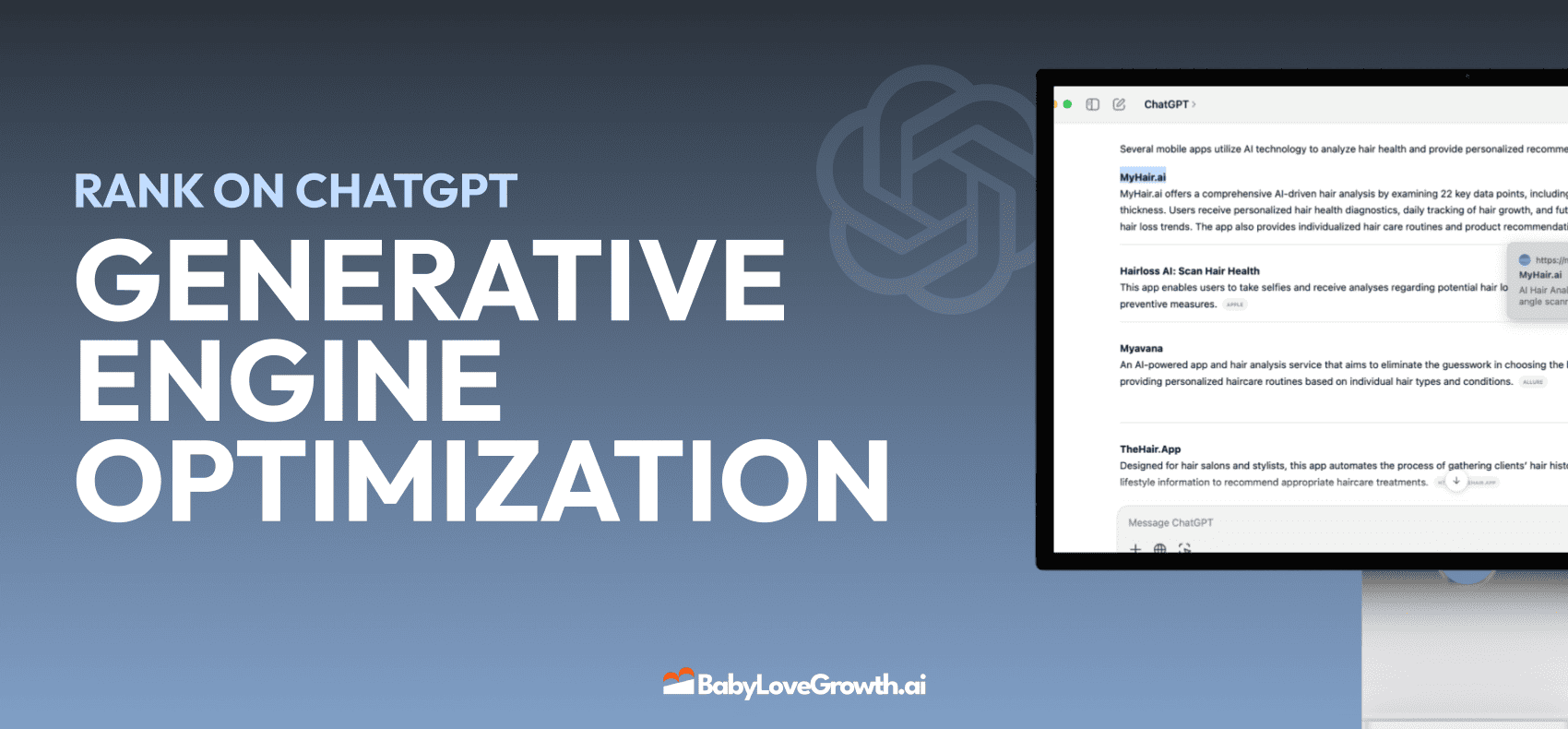
Generative Engine Optimization (GEO)
Learn how Generative Engine Optimization (GEO) helps your content rank in AI search engines like ChatGPT and Google AI. This comprehensive guide explains the differences between SEO and GEO, why it matters for your business, and practical steps to implement GEO strategies for better visibility in AI-generated responses.
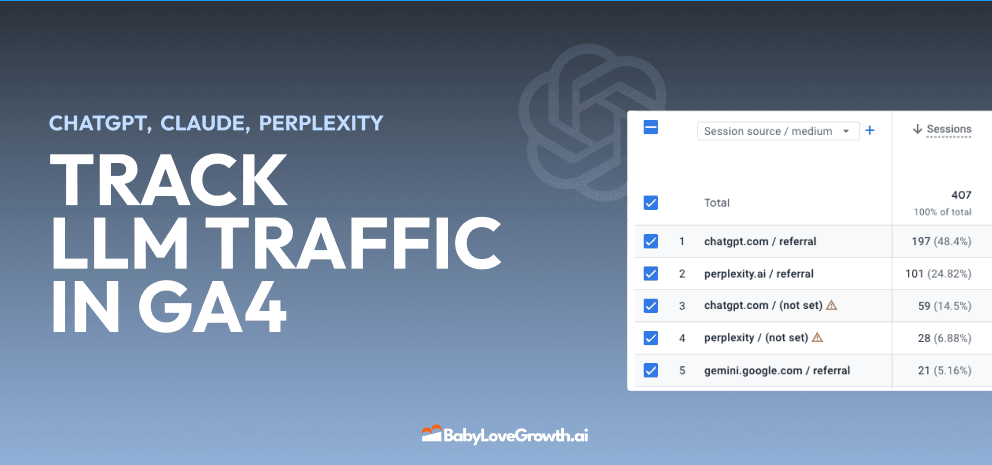
Track LLM Traffic in Google Analytics 4 (GA4)
Learn how to track and analyze traffic from AI sources like ChatGPT, Claude, Perplexity, and Google Gemini in Google Analytics 4. This step-by-step guide shows you how to set up custom filters to monitor AI-driven traffic and make data-driven decisions for your content strategy.
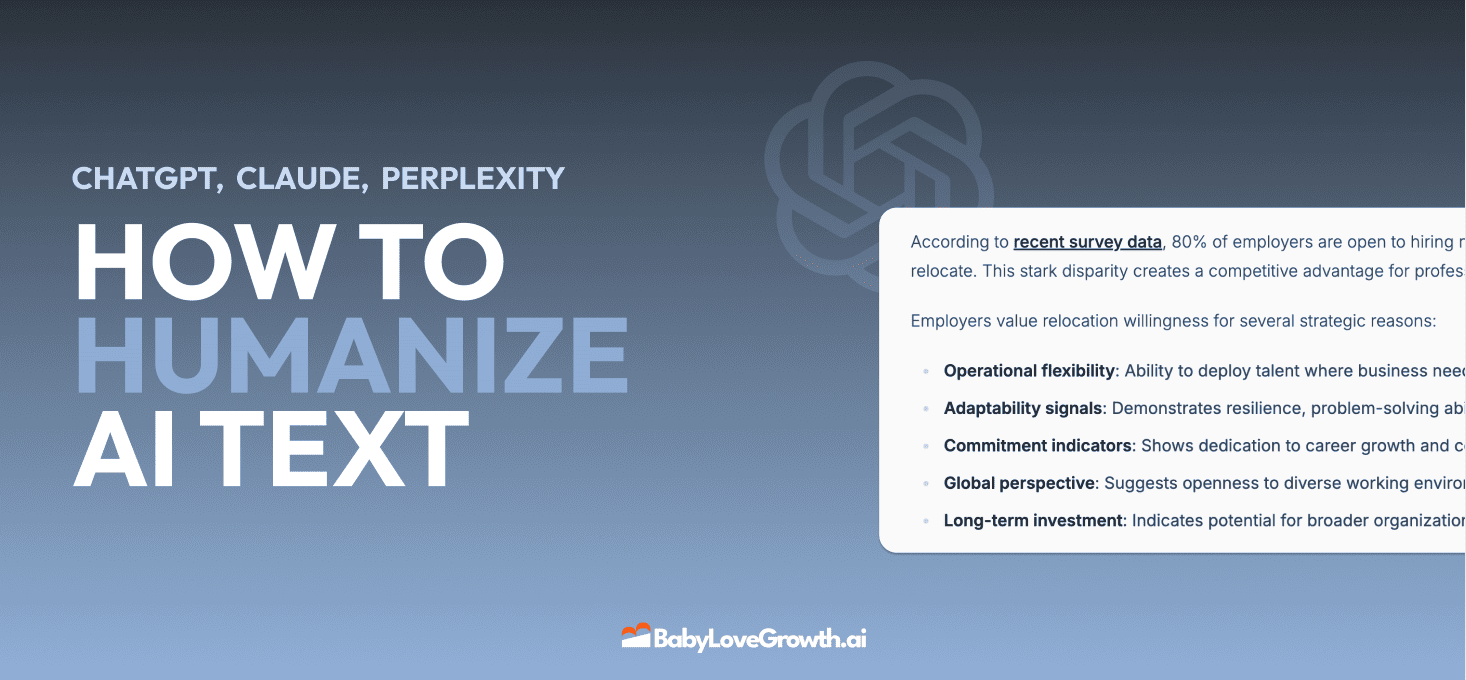
How to Humanize AI Text with Instructions
Learn practical techniques to make AI-generated content sound more natural and human. This guide covers active voice, direct addressing, concise writing, and other proven strategies to transform robotic text into engaging content.
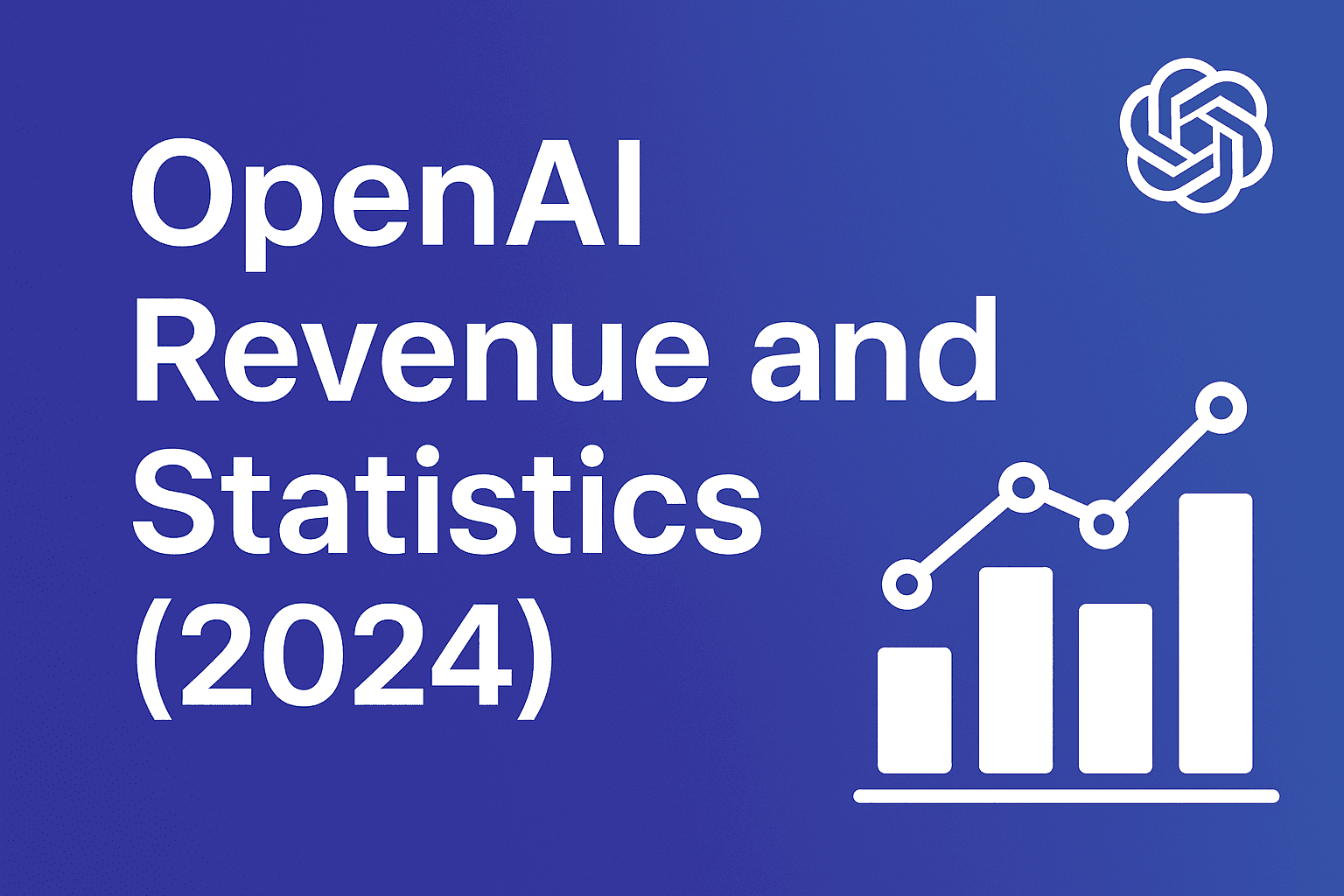
Open AI Revenue and Statistics (2024)
Comprehensive analysis of OpenAI financial performance, user engagement, and market position in 2023. Discover key statistics including $20B valuation, $1B projected revenue, and 100M+ monthly active users.